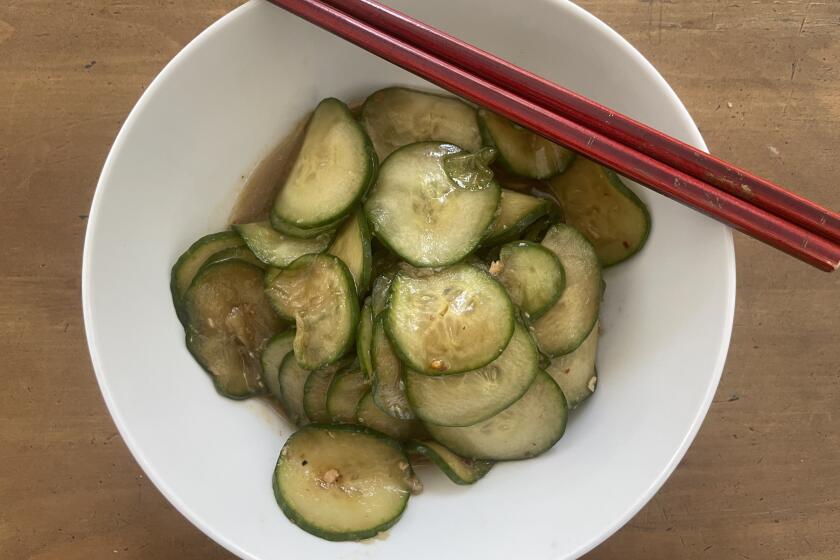New super-foods, from baobab to turkey tail, come with promises and caveats
When acai is at Wal-Mart and bags of quinoa and chia seeds line the aisles of Costco, it’s clear that super-foods have officially reached the masses. These supposedly nutritionally potent foods, which have grown for thousands of years in the Amazonian rainforest, the swamps of Trinidad or the Andean region of Peru, have found their way into American supermarkets and pantries.
Which means that a vacuum exists at the top of the food chain, again, for niche super-foods.
Now appearing at natural foods trade shows and in health food stores, and being touted online, are foods and beverages that are pitched as having even more antioxidants, vitamins and minerals than their predecessors. They are from Africa, India, Nicaragua and the mountains of Greece. Some have a cult following but can be hard to find. Their inherent appeal lies in the fact that they have an aura of uniqueness and exotica.
Still, the question remains: How necessary are these foods to an otherwise healthful diet filled with fruit, vegetables, protein and healthful carbs? Do people need to supplement their lunches with pitaya and baobab?
“It’s human nature to want a quick fix, so there’s always this great appeal when a new super-food is introduced,” said Lori Chong, a registered dietitian and nutritionist at Ohio State University Wexner Medical Center. “But they’re really not superior to any of the other fruits and vegetables we can get in the grocery store.”
Certainly it’s hard not to get lured in. Many of the new super-foods promise enhanced energy and wellbeing with a scoop of this or a shot of that. But Chong strongly advises people to do their homework before trying something new, no matter how healthful it sounds.
“Everything we take will interact with our medications or the other food we are eating,” she said. “If it’s something odd or not a normal part of your diet, definitely research it.”
Some of the latest on the shelves:
Moringa
It’s a tree native to West Africa whose leaves are said to be more nutritious than kale. The leaves contain protein, vitamins A, B and C, calcium and potassium. It’s available in powders, tea bags and bars. For information, go to kulikulifoods.com.
E3 live blue-green algae
The algae is wild-harvested from Klamath Lake in Oregon. It contains chlorophyll, minerals and amino acids, and it’s available in capsules or as a liquid. It can be purchased as a shot at some juice bars, including Krisp Fresh Living in Newport Beach. krispfreshliving.com
Citicoline
It is generally found in organ meats, such as beef liver or brain. It is an essential nutrient that helps with brain function. It can be eaten in the meat or found in beverages and pills. For information, go to nawgan.com; capsules are sold at GNC and Vitamin Shoppe.
Freekeh
This ancient roasted green wheat is common in the Middle East and North Africa. It’s high in fiber, calcium and iron. Cooked and seasoned, freekeh is an alternative to quinoa, brown rice or farro, although freekeh is not gluten-free. It can be found in many markets, including Monsieur Marcel markets in the Los Angeles area. For information, go to freekehlicious.com; Monsieur Marcel markets in the Los Angeles area.
Turkey tail mushroom
This mushroom grown in North America, Asia and Europe contains polysaccharides, which help fortify the immune system; it’s used commonly in Japan in alternative health practices. A spoon of powdered mushroom goes into juice or a shake. It can also be found as tea. For information, go to mushroommatrix.com.
Sideritis
This plant grown in the mountains of Greece is known for its high content of polyphenols, phytonutrients and antioxidants. It’s sold as Greek Mountain Tea and is sometimes mixed with sage, verbena and camomile for additional benefits. For information, go to kliotea.com.
Tiger nuts
This ultimate Paleo diet food has been around since prehistoric times. It’s found in many parts of the world, including around Valencia, Spain, where it’s put into a cold drink called horchata. Tiger nuts are not nuts. They are tubers that are high in fiber, magnesium and potassium. Tiger nuts can be eaten as a snack or ground into flour. For information, go to tigernutsusa.com.
Baobab
The baobab fruit, which looks like a slender watermelon and is grown in Africa, is loaded with antioxidants and vitamin C. In African culture, it is used to combat asthma and inflammation. It is ground into powders and used in shakes and smoothies or as a tea. For information, go to republicoftea.com.
Pitaya
A bright pink fruit also called dragonfruit, pitaya is from Central America and contains vitamin B, fiber and magnesium. It can be eaten raw but is frequently sold frozen in supermarkets for smoothies. It’s also used at many juice stands, including in Whole Foods and Sprouts. For more information, go to pitayaplus.com.
Guayusa
The leaves of the guayusa tree, which comes from the rainforest in Ecuador, are naturally caffeinated and act as a stimulant when brewed. They also have three times more antioxidants than goji berries and acai. They are made as tea or included in energy drinks. The ingredient was recently introduced in the Mamma Chia Energy drink line (mammachia.com) and as loose leaf teas, tea bags and sparkling drinks from Runa (runa.org).
ALSO:
For new dietary guidelines, U.S. panel looks at the whole plate
One way to a long and healthy life? Live a ‘Blue Zone’ lifestyle
Six common plants that might do a body good
More to Read
Eat your way across L.A.
Get our weekly Tasting Notes newsletter for reviews, news and more.
You may occasionally receive promotional content from the Los Angeles Times.









